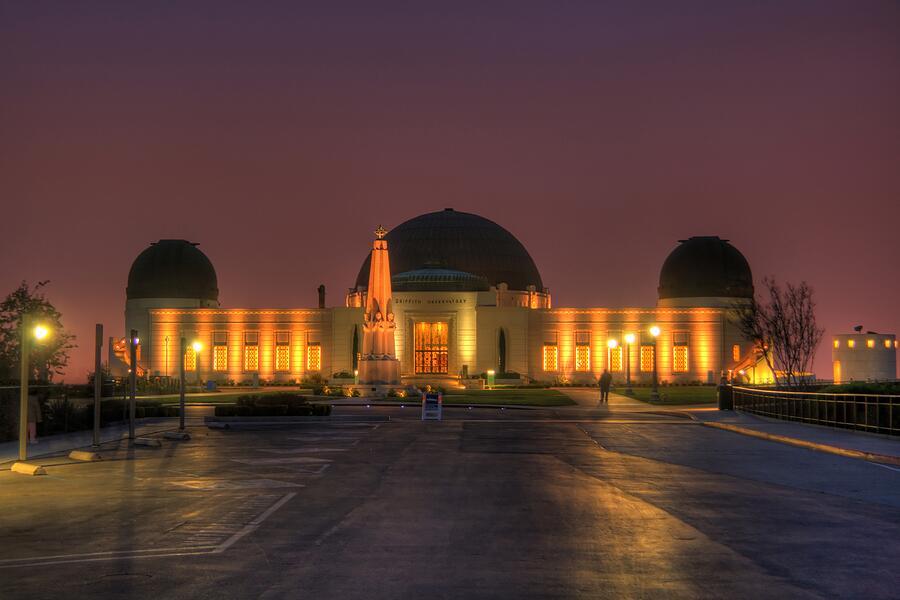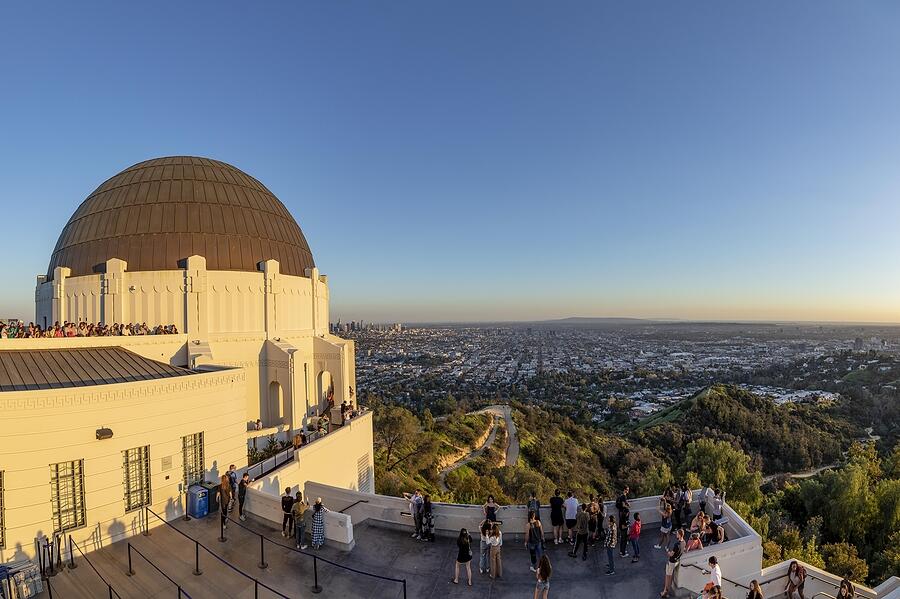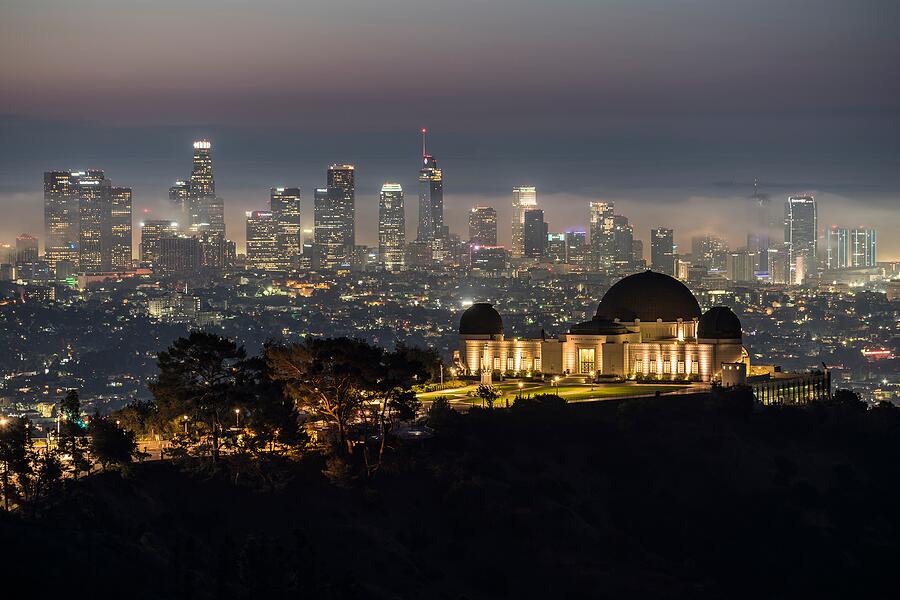For the ten years I lived in the Los Angeles area, I always tried to see past the endless urban sprawl and find landmarks that represent the city.
One of those is Griffith Observatory, which is one of the most popular places to view LA from above. Not surprisingly, it’s far more attractive at night, where you can appreciate the twinkling lights that obscure the daytime smog, and thus it’s more crowded to go at that time.
When I was local in the late 1980s and early 1990s, access was a little easier. I could drive up Observatory Road, past the Greek Theater and drive to the parking lot and walk around. For a small admission, I could visit the planetarium. Now because of the COVID pandemic, the visiting hours are limited to the weekends, and it’s recommended that you either walk to the grounds or take public transportation (yes, you can do that in LA). Free parking is no longer an option.

But first, some history…
Welsh immigrant Griffith J. Griffith made his fortune in mining in Mexico and real estate in his adopted home of Los Angeles. He wanted to create a grand park that would befit a great city, so he donated more than 3,000 acres of his property, Rancho Los Felis, to the city, which became Griffith Park.
Here's what Griffith proclaimed in December 1896:
"It must be made a place of rest and relaxation for the masses, a resort for the rank and file, for the plain people...I consider it my obligation to make Los Angeles a happy, cleaner, and finer city. I wish to pay my debt of duty in this way to the community in which I have prospered."
Not sure what he exactly meant by "the plain people," but the intention was certainly something to benefit everyone. Sixteen years later, after a visit to the observatory on Mount Wilson in the nearby San Gabriel Mountains, Griffith wanted to bring that same sense of cosmic wonder he experienced to all in LA. With the help of the city, Griffith funded and constructed an observatory, also named after himself.

The problem with visiting Griffith Observatory
Today, with the lights of one of the brightest cities at night obscuring the original purpose of the Observatory, most visitors now come here to gaze at view of the city below. That's especially true on a near-perfect, smog and overcast-free and visitors bureau wish list sunny day, as I did this past week.
If you want to visit the Griffith Observatory, you can get there several ways. Some will park on the lower section of Hillhurst Drive and walk the entire way, which is roughly two miles uphill. Others will park at near the Greek Theater and either hike some of the network of trails or take a shuttle bus.
Because my time was limited, I was willing to pay the $10 for parking closer to the top, but what I didn’t realize was how it was set up.
From the T-intersection that goes to the Observatory, I then started to head down a winding road that was jammed with cars, with no one leaving anytime soon. Every few hundred yards would be a prominent parking kiosk taking that $10 for the privilege of parking “closer,” but the problem was the only available parking I found was nearly a mile away…from the intersection. There wasn’t any advantage of choosing this option, and since I needed to leave, I gave up.

If you want to visit
I may not have been able to visit the Griffith Observatory during this time out to LA. But here are three tips to avoid the problem that I encountered:
1. Be willing to take a walk/hike
This is probably the most sensible approach. Park on Hillhurst or at the Greek Theater, put on some comfortable athletic shoes and get moving. You’ll get some bonus exercise, and you won’t have to shell out $10.
2. Go early on an overcast day during the daytime
Yeah, that is a specific directive, but since the Observatory is open on the weekends (Friday at 10 AM, Saturday and Sunday at 12 noon), your best option is to go when most locals haven’t awakened yet, and the romantic clear night view isn’t important.
3. Sign up with a tour or group
This may not be the most appealing choice, especially for those who like freedom and flexibility. But you will have the guarantee of getting there not having to worry about parking or trying to slog up a long ascent.
